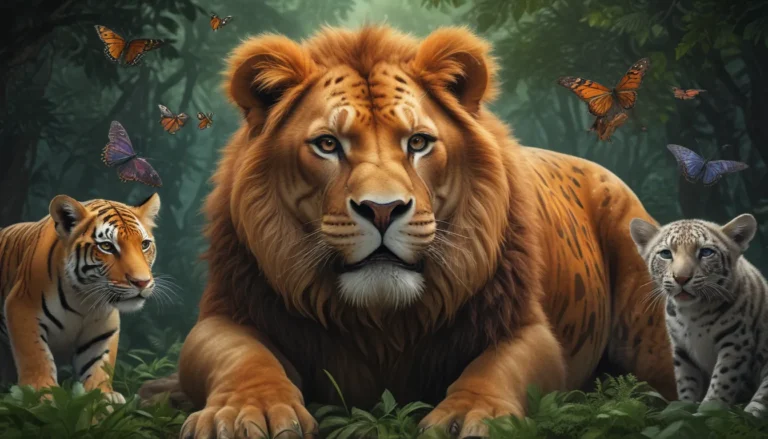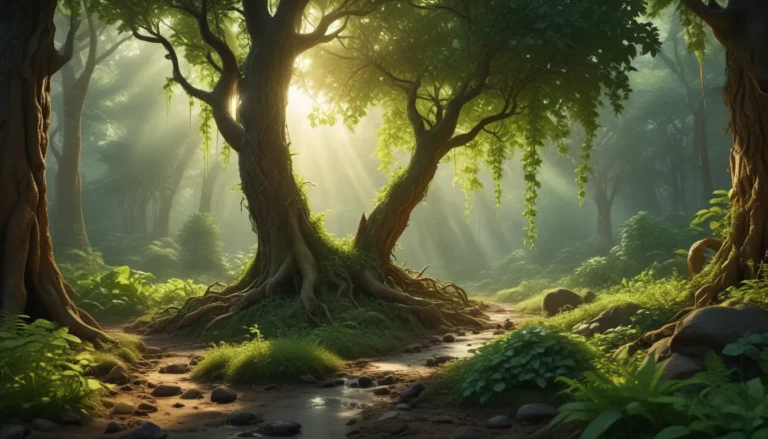A Note About Images: The images used in our articles are for illustration purposes only and may not exactly match the content. They are meant to engage readers, but the text should be relied upon for accurate information.
Welcome to the captivating world of paleobiogeography, where the study of paleontology and biogeography intertwine to reveal the secrets of our planet’s past. By examining fossils, analyzing ancient climates, and tracing the movements of species across continents, paleobiogeographers unveil the dynamic history of Earth and the evolution of life. In this article, we will delve into 13 fascinating facts about paleobiogeography that showcase the remarkable discoveries made in this interdisciplinary field. From the connections between dinosaurs on different continents to the impact of ancient climate change, prepare to be amazed by the stories hidden in Earth’s fossils and genetic profiles. Join us on a journey back in time as we uncover the mysteries of paleobiogeography!
Uncovering Earth’s Secrets
Paleobiogeography reveals ancient climates, migration routes, and the breakup of continents, providing insights into the evolution of life and the history of our planet. By studying fossils, paleobiogeographers piece together the enigmatic stories of ancient species, island colonization, and the impact of climate change. This interdisciplinary science sheds light on the movements of plants and animals across the globe over millions of years, offering a glimpse into the geological and climatic events that have shaped our world.
The Dinosaur Connection
One remarkable aspect of paleobiogeography is its role in uncovering the extraordinary connection between dinosaurs on different continents. Fossil records reveal similarities between dinosaur species found in regions like Africa, South America, and Antarctica, suggesting that these landmasses were once interconnected, providing a pathway for dinosaur migration.
Ancient Climates Revealed
Through paleobiogeography, scientists can reconstruct ancient climates based on the distribution of fossils. By analyzing the types of plants and animals found in various regions, researchers paint a picture of past climatic conditions, offering valuable insights into how Earth’s climate has evolved over millions of years.
Island Biogeography Puzzle
The study of fossils found on isolated islands unravels mysterious patterns of species distribution, shedding light on how plants and animals colonized these remote locations and adapted to their unique environments. Paleobiogeography provides valuable insights into the dynamics of island ecosystems and the processes of colonization and adaptation by various species.
The Mystery of Gondwana
The breakup of the supercontinent Gondwana remains a subject of intrigue for paleobiogeographers. By examining fossil distribution patterns across southern continents like Africa, South America, India, Australia, and Antarctica, scientists piece together the ancient puzzle of Gondwana’s fragmentation, offering a glimpse into Earth’s geological history.
The Great American Biotic Interchange
Paleobiogeography sheds light on the extraordinary event known as the Great American Biotic Interchange, where plants and animals migrated between North and South America around three million years ago. The study of fossil evidence helps us understand the impact of this biodiversity exchange on the continent’s ecosystems, highlighting the interconnectedness of species across regions.
Fossils as Time Markers
Fossils serve as crucial markers of geological time in paleobiogeography. By examining the distribution of fossils within different rock layers, scientists determine the relative ages of formations, allowing for the construction of accurate timelines of Earth’s history and providing a framework for understanding the evolutionary timeline of life on our planet.
Island Endemism
Through paleobiogeographical studies, we can unravel the origins of unique and endemic species found on islands, offering insights into how these species evolved in isolation over millennia. Understanding island endemism provides valuable information about the processes of speciation and adaptation in isolated island ecosystems.
Changes in Landmasses
Paleobiogeography helps us track the movement of landmasses over millions of years by examining patterns of fossil distribution and comparing them to present-day continents. By reconstructing tectonic plate movements and the shifting of landmasses, scientists gain insights into the geological history of Earth and the processes that have shaped our planet’s landscapes.
Migration Routes of Early Humans
Studying paleobiogeography provides valuable insights into the migration routes and dispersal patterns of early humans. Fossil evidence and the distribution of early human remains help us piece together the incredible journeys our ancestors undertook to populate different parts of the world, offering a glimpse into the history of human migration.
Impact of Climate Change
Paleobiogeography enables us to understand how past climate changes have influenced the distribution and migration patterns of plants and animals, providing crucial information for predicting and mitigating the effects of modern-day climate change on Earth’s biodiversity. By examining the responses of ancient organisms to climate shifts, paleobiogeographers offer insights into the potential impacts of climate change on current and future species.
Ancient Marine Faunas
Exploring the distribution of marine organisms throughout history, paleobiogeography offers insights into the evolution and dispersal of marine life. By analyzing fossil records, scientists uncover the factors that have shaped ancient oceanic ecosystems, providing a window into the diversity and dynamics of marine faunas over geological time scales.
Rates of Evolution
Paleobiogeography provides clues about the rates at which species have evolved and diversified over time. By studying the distribution of fossils across regions, scientists infer how quickly new species emerged and adapted to changing environments in the past, offering insights into the processes of evolution and speciation through geological time scales.
Dispersal of Ancient Plants
Paleobiogeography unravels the mysteries of how ancient plants dispersed and colonized new territories. By examining the fossil record, scientists trace the migration routes of plant species, shed light on past dispersal mechanisms, and uncover the ways in which plants have shaped landscapes throughout Earth’s history, providing valuable insights into the evolutionary history of plant life.
Embark on a captivating journey through Earth’s ancient history as you explore the fascinating connections between organisms and their environments revealed by paleobiogeography. Delve into the intricate stories hidden in fossils and geological records, unraveling the enigmatic tales written in the rocks and scattered across the globe.
Conclusion
As we journey through the field of paleobiogeography, we uncover a world rich in connections between ancient organisms and their environments. From the impact of continental drift to the distribution patterns of species, there is a wealth of knowledge to be gained about Earth’s biological history. By studying fossils and analyzing geological records, we piece together the puzzle of how life has evolved and migrated over millions of years, unlocking the secrets of our planet’s past.
Advancements in technology and collaborations among scientists worldwide continue to deepen our understanding of paleobiogeography. This field offers a gateway to exploring the mysteries of ancient life, enhancing our comprehension of the intricate relationships between organisms and their habitats. Join us on this journey of discovery as we unravel the enigmatic tales written in Earth’s ancient rocks and fossils.
FAQs
-
What is paleobiogeography?
Paleobiogeography is the study of the distribution of organisms in past geological times, taking into account factors like continent movements and climate changes. -
How does paleobiogeography contribute to our understanding of evolution?
By analyzing the distribution patterns of fossil species, paleobiogeographers unravel the evolutionary history of organisms and identify relationships between different species and their environments. -
What is the importance of Gondwana in paleobiogeography?
Gondwana, a supercontinent that existed around 180 million years ago, plays a crucial role in understanding the dispersal and differentiation of many organisms across the Southern Hemisphere. -
How does paleobiogeography help in identifying biodiversity hotspots?
By studying the distribution of ancient species, researchers can identify regions that were rich in biodiversity and understand the factors that contributed to their development. -
What is the role of paleobiogeography in studying the effects of climate change?
By examining how past organisms responded to ancient climate shifts, paleobiogeographers can provide valuable insights into how current and future species may be impacted by ongoing climate change.
Unraveling Earth’s ancient mysteries, paleobiogeography offers a window into the dynamic history of our planet and the evolution of life over millions of years. Join us on this journey of discovery as we explore the fascinating connections between organisms and their environments, uncovering the secrets of Earth’s past through the lens of paleobiogeography.






